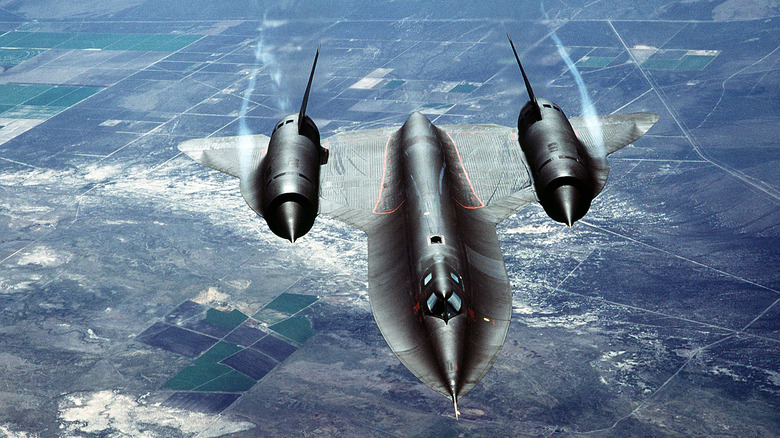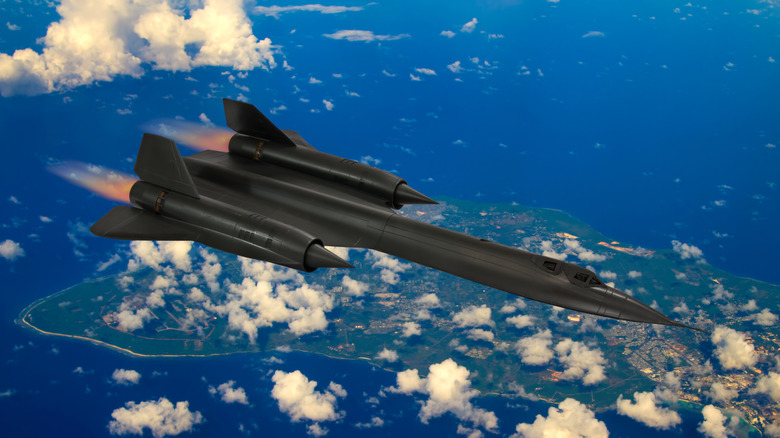One Of The Best SR-71 Blackbird Legends May Have Happened Because Of Faulty Clearance
We may receive a commission on purchases made from links.
Before the era of military drones and satellites, there was the SR-71 Blackbird — an engineering marvel. It operated in the upper reaches of Earth's atmosphere, blurring the line between conventional flight and space exploration, leaving aviation enthusiasts and history buffs alike in awe of its capabilities. The SR-71 (named for Strategic Reconnaissance) was not just another aircraft. Developed during the Cold War era by Lockheed, the Blackbird — features dark camouflage, which some have likened to the venomous Habu snake — embodied innovation. Powered by Pratt & Whitney's J58 engine, this aircraft redefined long-range reconnaissance, boasting unmatched altitude performance and a blistering top speed exceeding Mach 3. The SR-71 set enduring records for horizontal flight altitude and non-rocket-powered speed, which remain unmatched today.
Skunk Works, Lockheed's clandestine aerospace research and development unit, is renowned for its innovative and secretive projects. It produced groundbreaking aircraft like the F-117 Nighthawk stealth fighter and the Blackbird. Operating autonomously, Skunk Works excels in rapid prototyping and delivering cutting-edge aerospace technologies. Pilots often have fascinating flight stories, but few compare to the tale recounted by Lt. Colonel William Burk Jr. about a mission he flew with his Reconnaissance Systems Officer (RSO) Tom Henichek over Lebanon, as detailed in Ben Rich's book "Skunk Works."
What happened?
In the autumn of 1983, 220 Marines, 18 sailors, and three soldiers were killed by a suicide bomber in the Marine Barracks in Beirut, Lebanon. Then-President Ronald Reagan directed surveillance of terrorist cells in the area. Burk and Henichek left RAF Mildenhall AFB in England on a mission over Lebanon. Denied access to French airspace, their adjusted mission plan included refueling off England's south coast, a rapid transit along the coastlines of Portugal and Spain, passage through the Straits of Gibraltar, refueling in the Western Mediterranean, a direct overflight of Beirut, and departure along the southern Mediterranean with another refueling stop over Malta, followed by a supersonic return through the straits back to England.
"Henichek informed me that our defensive systems display showed that SA-5 was tracking us. About 15 seconds later, we got a warning of active guidance signals from the SA-5 site," Burk recalled. After getting a low-oil-pressure warning, they altered course for England, crossing France without authorization. As a result, they were intercepted by a French Mirage III demanding a Diplomatic Clearance Number. Henichek gave them something else.
"What he had given him was 'the bird' with his middle finger: I lit the afterburners and left that Mirage standing still. Two minutes later, we were crossing the Channel," Burk recounted.

